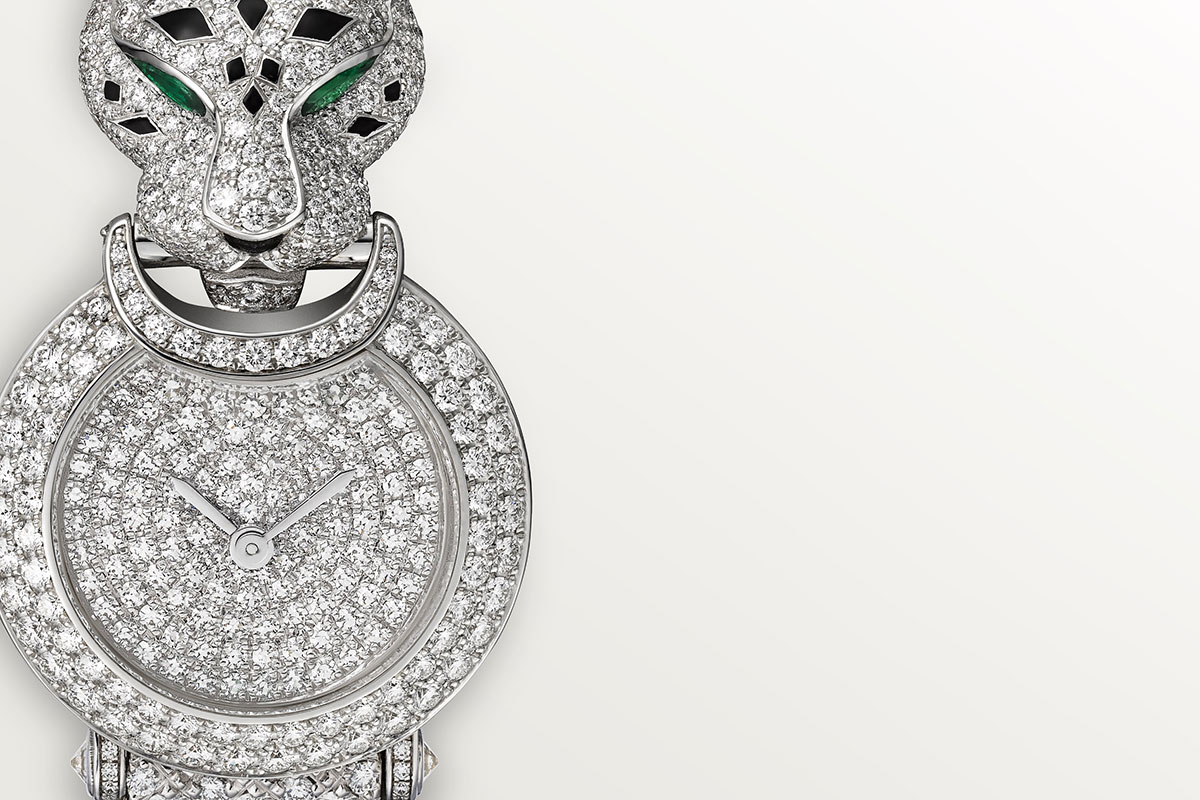
From Prong To Invisible Setting Techniques, Gem-Setting In Jewellery Watchmaking Is A Highly Skilled Business.
Gemstones are worn across cultures and civilisations for a medley of reasons and occasions. This practice has persisted with time, not only in the form of jewellery pieces but also statement timepieces. It is in jewellery watches where the nexus between gem-setting and watchmaking becomes apparent. Although jewellery pieces and watches may look markedly different in form and shape on the surface, fundamentally, there are many underpinning commonalities such as artistry, craftsmanship and precision. A designer’s extraordinary vision requires artisans’ craftsmanship in order to realise the gemstone-encrusted timepieces.
At the heart of their undertaking is savoir-faire. The process of bedecking a jewellery timepiece encompasses more than selecting the right gemstone with the desired qualities such as clarity, tone, cut and carat. Careful consideration is placed on how these gemstones come together, such as the manner they are set on the watch, to create the composition as envisaged. Gem-setting refers to the method used to attach the jewel onto the metal surface. In the case of jewellery watches, the said surface could be the dial, lugs, bezel, case front and middle, crown, bracelet and/or buckle.
Some gem-setting techniques have become standard, while innovative, sophisticated and demanding techniques continue to emerge as a result of ingenuity, necessitated by the increasingly elaborate designs of modern high jewellery watches. Luxury watchmakers often combine different types and cuts of gemstones and gem-setting techniques to bring forth a spectacular objet d’art, highlighting their artisanal and horological credentials while unfurling the emotive power and resplendent lustre of the gemstones.
Prong Setting
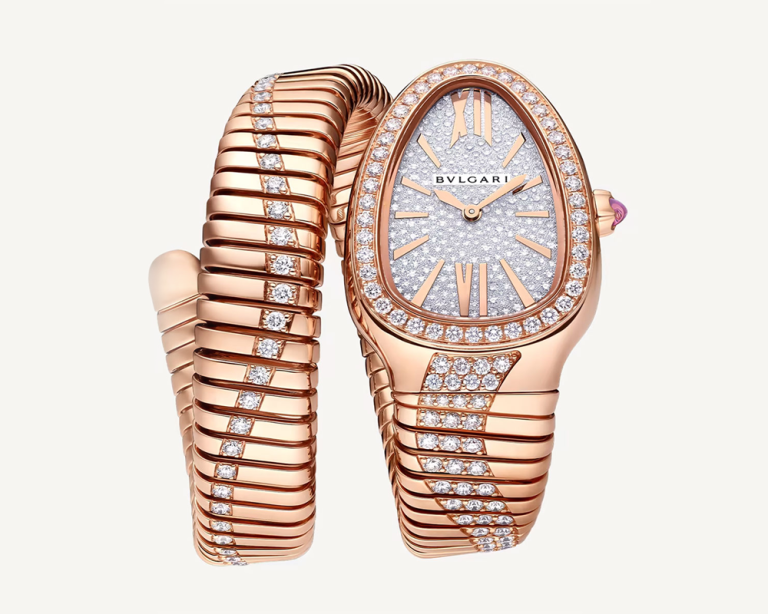
Bulgari’s Serpenti Tubogas Infinity is marriage of a variety of gem-settings, with the full pavé dial embodying the house’s identity as a luxury jewellery and watchmaker.
As indicated by its name, the French word pavé translates simple to paved. This technique can be traced back to the Georgian era when it was named as such to reflect a paved or cobblestoned road. In the pavé setting, a series of divots (or small holes) are dug into the metal base, where gemstones are inlaid, followed by the creation of beads or prongs to help moor the gemstones. Favoured especially on the dial of a watch, the pavé setting accentuates the collective harmony and magnificence of the gemstones dazzling in concert.
Invisible Setting
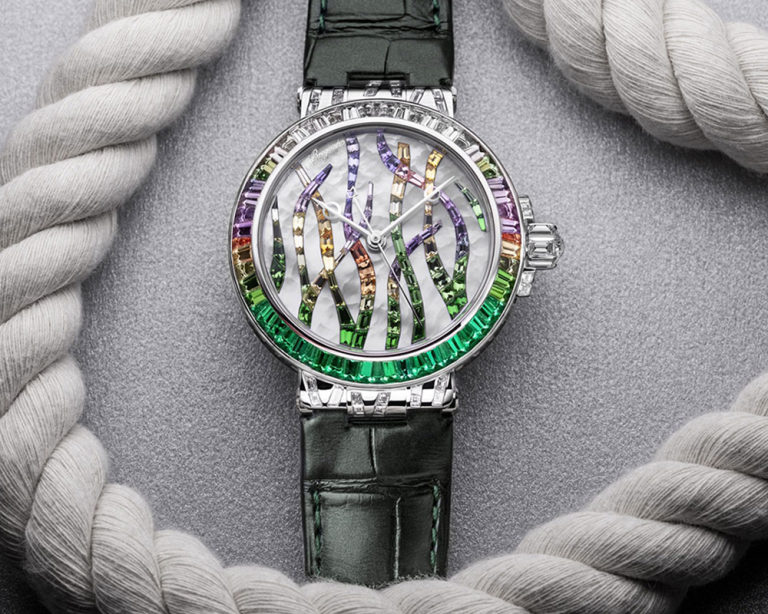
To depict the plant’s arabesques on the Marine Haute Joaillerie Poseidonia, Breguet taps into the invisible setting showcased by the dial set with 85 baguette-cut diamonds.
The invisible setting is a self-explanatory technique that provides maximum visibility to the gemstone by completely concealing the metal that upholds it. This approach is fundamentally different from prong, bezel and pavé settings. In the invisible setting, grooves are cut specifically into the back of the gemstone, before it is snapped into place on a lattice positioned underneath. The result is an unobstructed view of the gemstones, visibly free of any support structure.
Snow Setting
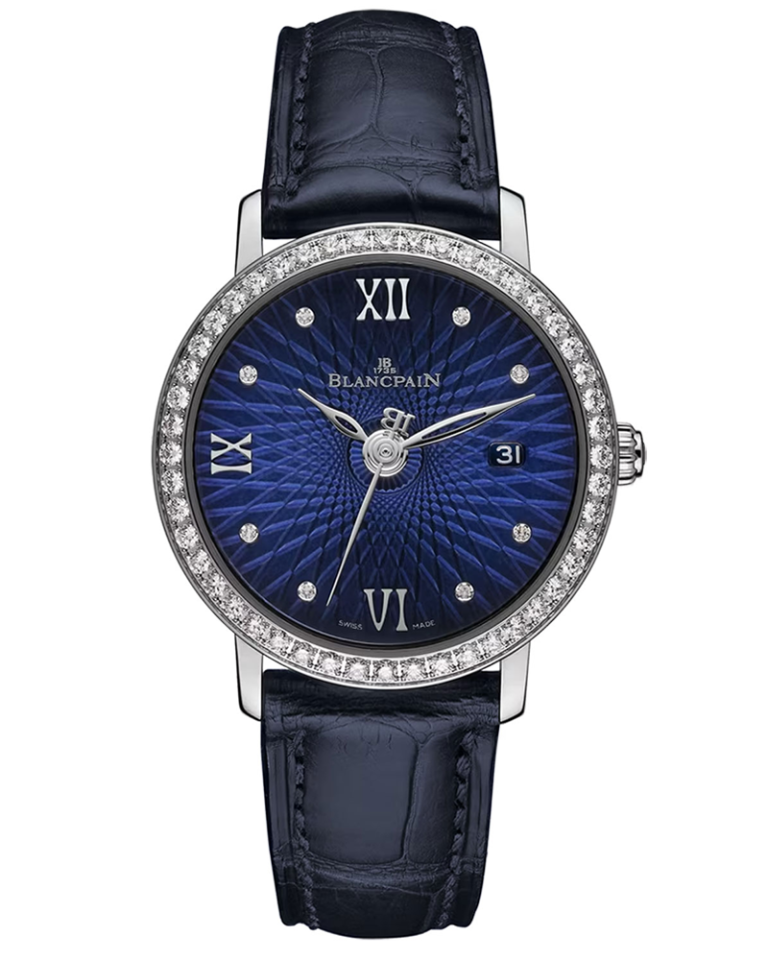
The geometric motif of the Blancpain Villeret Ultraplate is accentuated with the bezel replete with prong-set diamonds.
Also known as the claw setting, the prong setting is the most ubiquitous and classic of all. The prongs essentially act as a cradle for the gemstone. It enables light to penetrate the gemstone from a multitude of angles, elevating the gemstone’s overall brilliance. The prongs are notched and burnished once the gemstone is set to help secure it firmly in place. Depending on the cut and shape of the gemstone, they are made in a variety of sizes and shapes, such as round, claw, petite claw, double-prong, v-shape prong, four-prong and more.
Bezel Setting
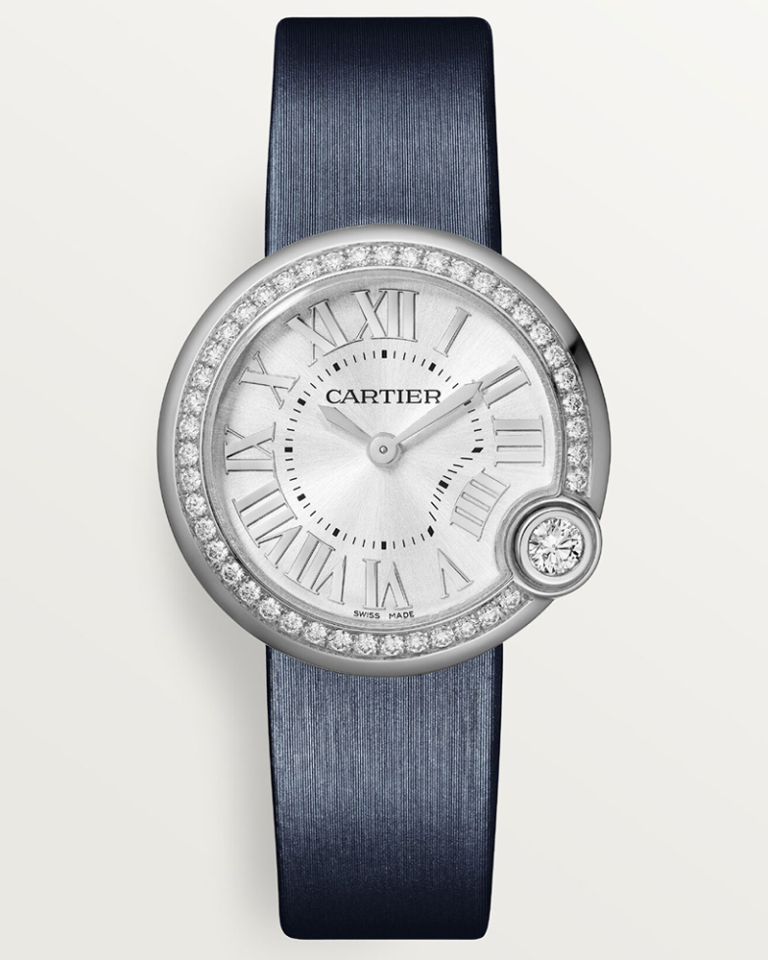
Many iconic Cartier designs feature a single gemstone bezel-set in the crown of the watch, including the Cartier Ballon Bleu which contains more than one type of gem-setting techniques.
Said to be the oldest gem-setting technique, the bezel setting has been in use since the advent of jewellery design and stone setting. Despite its redolent name, the bezel setting doesn’t equate to gemstones set on the bezel of a watch. A gem-set watch bezel may use other gem-setting techniques. What the bezel setting refers to is that it holds the gemstone securely in place by collaring it with a metal rim. By acquiring a protective bezel, the gemstone is offered greater protection from wear and tear and held securely. This benefit can explain the popularity of employing the bezel setting to affix gemstones to the crown of a watch.
Pavé Setting
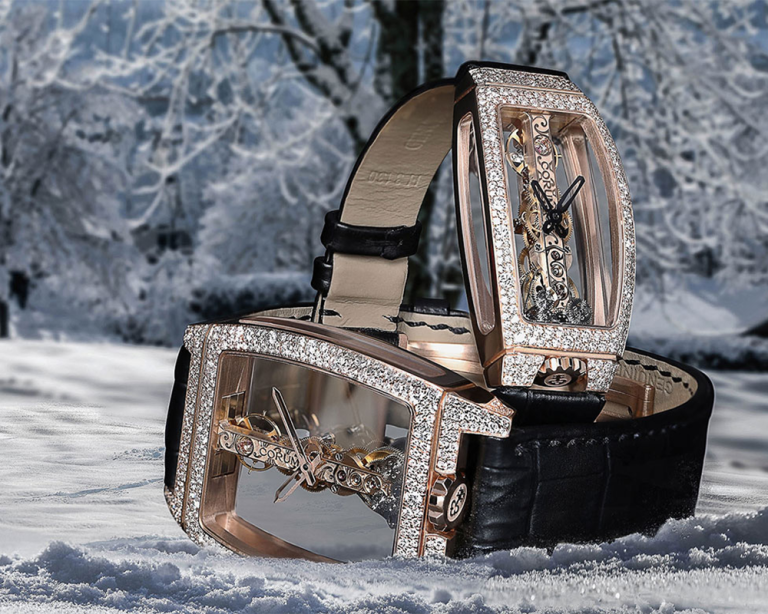
Diamonds aren’t just girls’ best friends. Corum showed that men too can pull off a snow-set diamond watch with aplomb when it unveiled the Golden Bridges for him and her.
Evoking a snow-dusted surface, the snow setting brings the nature-inspired motif to life with some ingenuity. The pre-cut gemstones of various sizes seemingly placed at random are in fact deliberately orchestrated, using the gemstone of the suitable size to fill up the gap while tracing the contour of the watch. Thanks to the randomness of the snow setting, no two watches are identical. Although this mosaic-like method was invented as recently as 2002, many contemporary watchmakers have since adopted the snow setting to give their creations a wintry touch.
Discover more brands and collections at Cortina Watch boutiques, or online.











